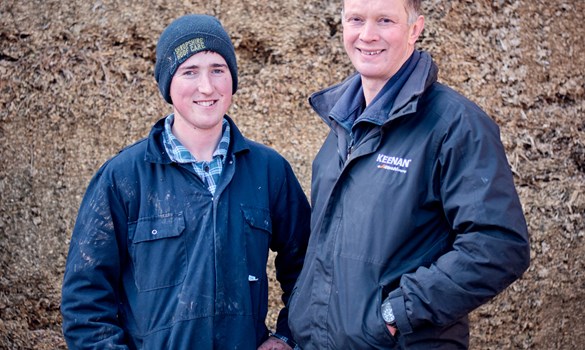Calculating and reducing your carbon footprint
This webinar is a past event - watch the recording
Join us on this webinar to find out how to measure and reduce your carbon footprint and make your farm more efficient.
Michael and Tony Ball will share their carbon footprint figures and calculations for their robotic farm, Coton Wood in Derbyshire. You’ll learn how carbon foot-printing can help identify areas where management changes can reduce your environmental impact, increase efficiency and improve public image.
Becky Willson from The Farm Carbon Toolkit and AHDB’s David Ball, will interpret the figures and highlight effective ways to reduce emissions on farm and improve sequestration opportunities. Data can be used to make informed management decisions on feeding, milking efficiency, productivity, fertility management and health and welfare.
In this webinar you will learn:
- Coton Wood’s current management practices and operations
- How carbon foot-printing data could be used to effectively manage the herd
- Why carbon foot-printing is important to your farm, how it works and how to make the best use of it
- How carbon data can be used to improve public perception of the dairy industry
- How you can take the lead in calculating your emissions on your own farm
If you’re responsible for managing cows, interested in exploring robotic systems, managing dairy cows on robots or benchmarking, then this meeting is for you.
For more information regarding the event please call Hannah Lilburn, AHDB, on 07818723857.
About Coton Wood Farm
Michael and Tony Ball farm in partnership, running a 500-strong herd plus followers across three sites and operating an all year-round calving system.
Five years ago, a major investment was made into robots to increase cow numbers from 200 to 500 with the intention of making milk in the most efficient way possible with an emphasis on cow comfort and welfare.
They now produce 10,000 litres per cow per year on their 750 acres farm.
Originally autumn block calvers, the brothers faced increasing competition for labour and decided to move to all year-round calving with the installation of eight Lely robots in 2014, to manage the milking process. Completed in April 2016, the transition was complemented with automatic silage pushers, scrapers and calf feeders.
Commenting on their appointment, the brothers said “We are really excited to have been chosen as a strategic dairy farm. We want to share our experiences with other farmers and are hoping that becoming a strategic farm will focus our business direction and enable us to pay more attention to key performance indicators”.
Follow their story by visiting www.ahdb.org.uk/farm-excellence/Coton-Wood-Farm or get the latest updates by searching for #SDFCotonWoodFarm on Twitter.
About Strategic Dairy Farms
Strategic dairy farms aim to help farmers learn from each other through regular on-farm meetings where we will share key performance data and showcase what the best farmers are doing.
They form part of the Optimal Dairy Systems programme which aims to help dairy farmers reduce costs and increase efficiency by focusing on either a tight block or all-year-round calving system.
The growing network of strategic dairy farms have calculated KPIs for their enterprises which are shared at meetings and published online. These are physical and financial performance measures that are critical to success. Farmers can benchmark their businesses against these KPIs to help identify areas for improvement.
Follow the programme and find other local SDFs at www.ahdb.org.uk/farm-excellence


